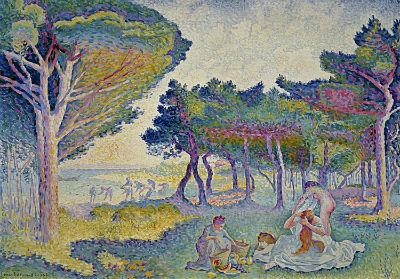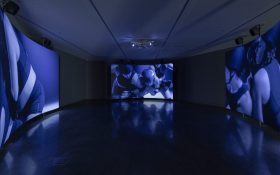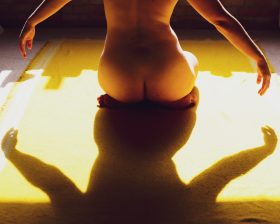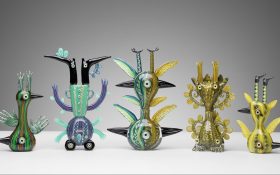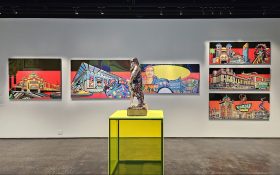We do the Post-Impressionists a great disservice when we call them Post-Impressionists. With their own philosophy, colour palette and form, these artists are so much more than a footnote to Impressionism.
At last, with the first survey exhibition dedicated to this radiant work we are being given a chance to look at Seurat, Signac et al, literally and figuratively, in their own light.
Radiance:The Neo-Impresionists has tried to remedy the nomenclature problem by replacing ‘post’ with ‘neo’, no doubt with aware that an exhibition with ‘Impressionism’ in the title is an asset that can’t be discounted. But call-them-what-you-will these artists stand on their own merits, offering both an aesthetic and an understanding of art quite different from their better-known predecessors.
I suspect I’ve never really looked at Neo-Impressionism properly before because they have always been in the same galleries as those Impressionists and in this context they are like trying to eat fresh fruit straight after you’ve gorged on chocolate mudcake.
This exhibition is the first comprehensive exhibition of the period in Australia and it is a magnificent opportunity to come to understand and appreciate a group of artists who were essential influences on the colour movements of the 20th century.
The Neo-Impressionists were a product of their time, late 19th century French artists who had grown up in the shadow of the Franco-Prussian war and the brutal repression of the Paris Commune. They rejected central control, the military and the city economy for an anarchist’s vision of a return to nature.
Some of the strongest works in this exhibition are Henri-Edmond Cross’s Arcadian landscapes. Mediterranean Shores shows a group of women with basket of fruit seated under trees which vibrate in almost surreal yellow and pink. In Cross’s The Beetle, we can’t see the beetle but sense the presence of the insect in the intense bodies of the two nude women bent over the ground, their multi-coloured bodies pulsating against the landscape.
Even when there is no clear intention from the artist, these works were read in their time as political statements, critical of the rigid, urban environment and worshipful of a future Eden. Maximillien Luce’s Paris-by-night pictures strike us primarily for their use of the reflections of street lighting- a new invention in late 19th Century Paris. But when Quai de L’Ecole, Paris, evening was first painted critics commented on the stream of workers returning home across the bridge and saw it as a comment on their lives.
Unlike the Impressionists, who sought to capture the truth of light and colour in the real landscape, the Neo-Impressionists (we have to call them something) headed back into the studio, deliberately using artifice to create work that heightened nature. They replaced the small blending dots of the Impressionists with larger dabs of primary and secondary colour, eventually developing to lozenges that form striking mosaics and influenced the work of 20th century colourists including Matisse and Mondrian.
Their work was based on the science of colour and an understanding that by placing the colours side by side they would cause an oscillating of light on the retina, making work more vibrant than real.
The push for vibrancy culminates in the later works such as Signac’s gorgeous Juan-les-Pins, evening, built in larges tiles of colour creating a mosaic of deep reds, yellows and puce that seems to grow more convincing longer we look at it until we are persuaded of its visual truth.
This technique is not purely a matter of colour but also of brushwork. Cross’s The Breaking Sea gives us the cliff faces in vivid pink, violets and reds but the wave movement is captured by swathes of large dots and curved horizontal strokes pushing against one another. Uncannily, the oscillating light can also produce the opposite effect: a restraint and stillness which gives wonderfully peaceful pictures like the harbour scene in Seurat’s Port en Bessin.
This exhibition has been skilfully curated by Marina Ferretti Bocquillon, Directeur Scientifique of the Musee des Impreessionismes, Giverny. She covers an excellent selection in a comfortable two rooms. We begin with the early Seurats and his pointillist experimentation. Look out for the painted border of Le Bec du Hoc and way pointillism continues off the painting onto the frame in Port-en-Bessin. We move through the seascapes, city by night and Arcadian landscapes to end with the vibrant works which prefigure the Fauves.
There is also a small section devoted to Neo-Impressionist portraiture, a less known and perhaps less successful genre but one well worth a little attention. There is an uncanny power in Theo van Rysselberghe portrait of poet and critic Emile Verhaeren, with the dismal indirect light on his face and the glare on his skeletal hand and cluttered desk.
Increasingly exhibitions in Australian capitals are tourism tempters, competing to bring in interstate visitors. Radiance isn’t a blockbuster with the marketing budget or profile to expect huge flocks of tourists but it is well worth getting on a plane for. And if you are within tram or train distance there’s no excuse.
Radiance:The Neo-Impresionists
National Gallery of Victoria
16 November 2012 to 17 March 2013
